Description
The water pressure testing apparatus consists of a manual pressure pump and a pressure-resistant chamber. It is utilized for conducting hydrostatic tests on products, utilizing pure water as the pressure medium. The chamber is capable of simulating a water pressure of 10 MPa, equivalent to a water depth of 1000 meters. The apparatus not only facilitates subjecting test objects within the chamber to water pressure tests, but also allows for external cables to be connected to the test object through openings in the hatch cover for power supply or communication purposes. The hatch cover features multiple openings for accommodating penetrator-like test objects. Moreover, the hatch cover is equipped with high-strength handles and rapid assembly slots, enabling manual opening and rotation to a locked position.
This apparatus provides a comprehensive solution for performing water pressure tests while affording flexibility for various testing items and ease of use.
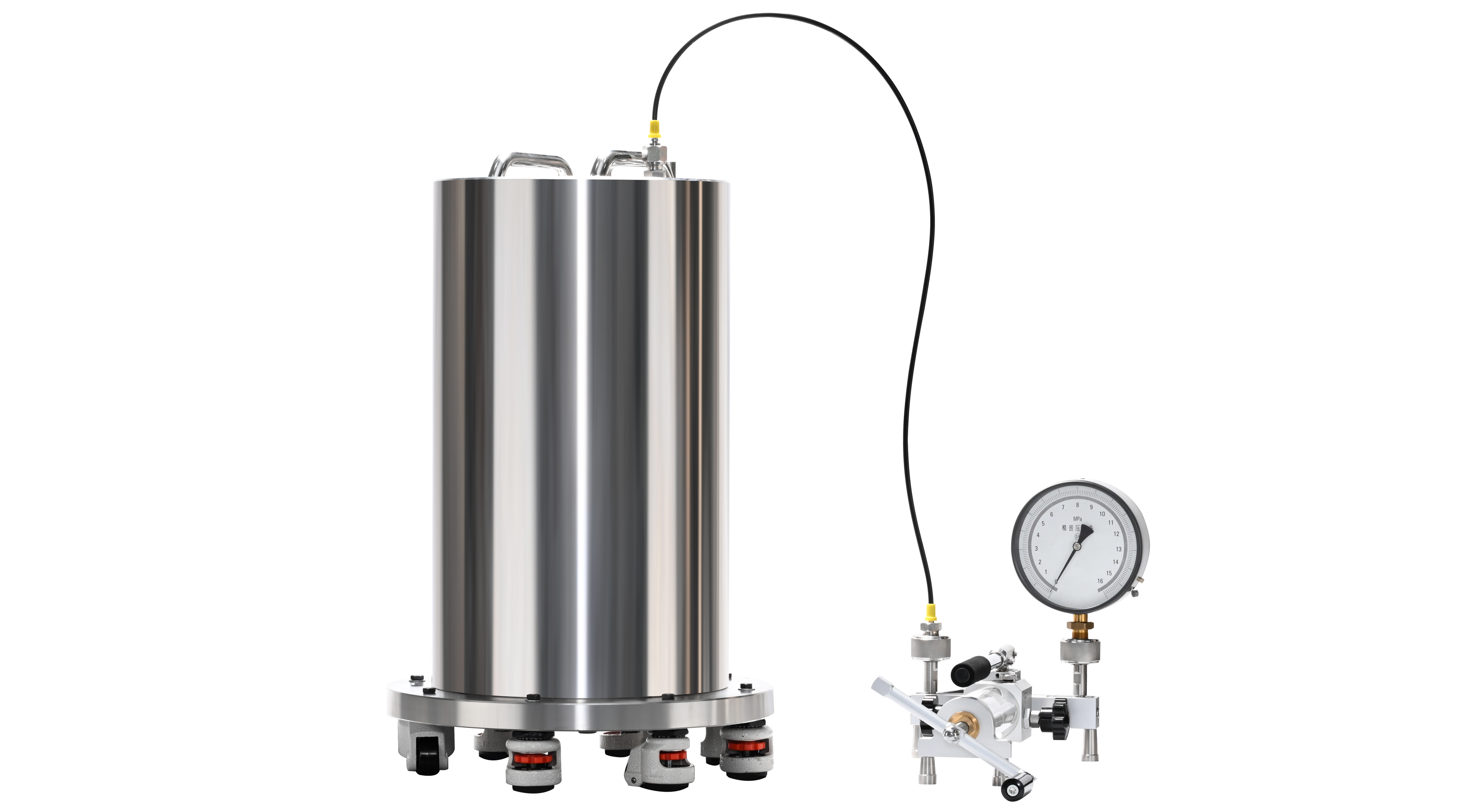
Shipping List
For each water pressure testing apparatus, the following items are included for the selected size.
- 1 x Chamber
- 1 x Manual Hydraulic Pump
- 1 x Hatch Cover
- 1 x Drip Tray
- 1 x Safety Ratchet
Specifications
| SPEC | 10Mpa Water Pressure Testing Chamber |
|---|---|
| Chamber Internal Height | 455 |
| Chamber Inner Diameter | 250 |
| Chamber Material | 316 Stainless Steel |
| Hatch Cover Material | 316 Stainless Steel |
| Openings in Hatch Cover | 18 Openings |
| Rated Load of Hatch Handle | 200kgf/1960N per handle |
| Medium | Pure Water |
| Rated Pressure | 10Mpa (1000 meters depth) |
| Drip Tray Dimensions | 800x600 |
| Pressure Range of Manual Hydraulic Pump | 0-16Mpa |
| Pressure Gauge Range | 0-16Mpa |
| Pressure Connection Method | Quick Coupling |
| Operating Temperature | 0-50℃ |
| Chamber Total Weight | ≈200KG |
| Fulcrum Wheels | 8 pcs |
| SKU | 15000102-1000 |
Dimensions:
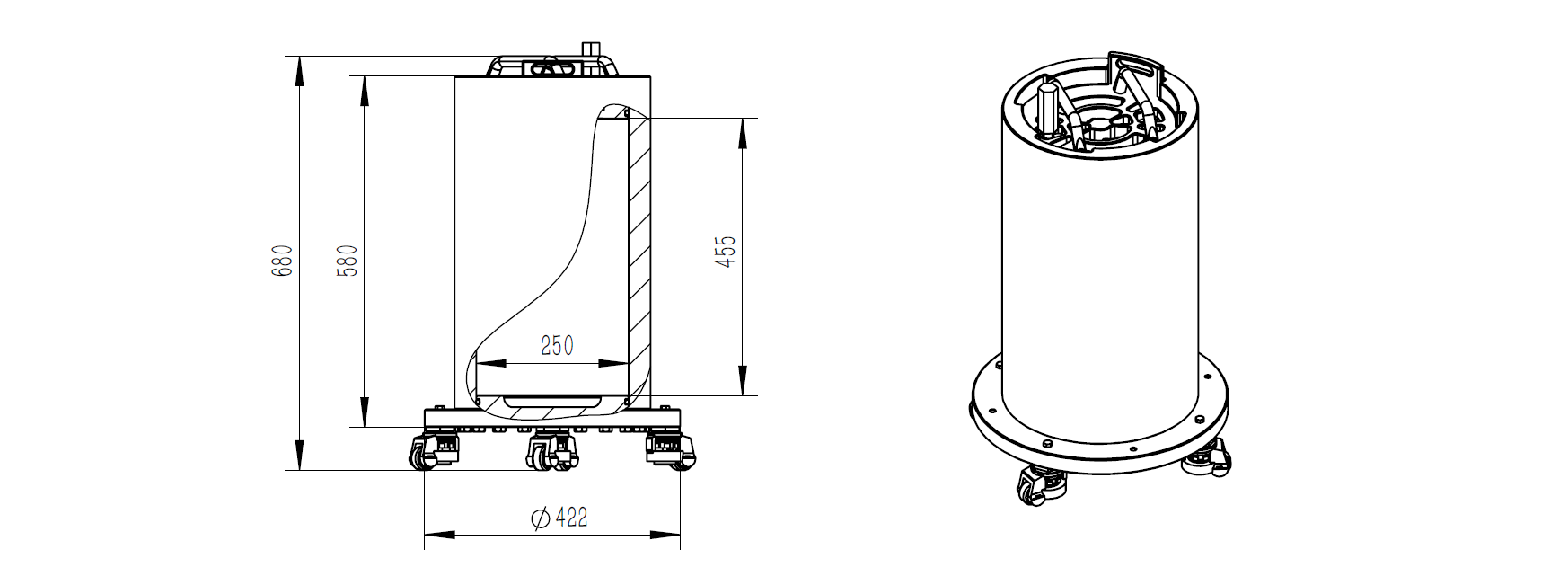
Openings in hatch cover:
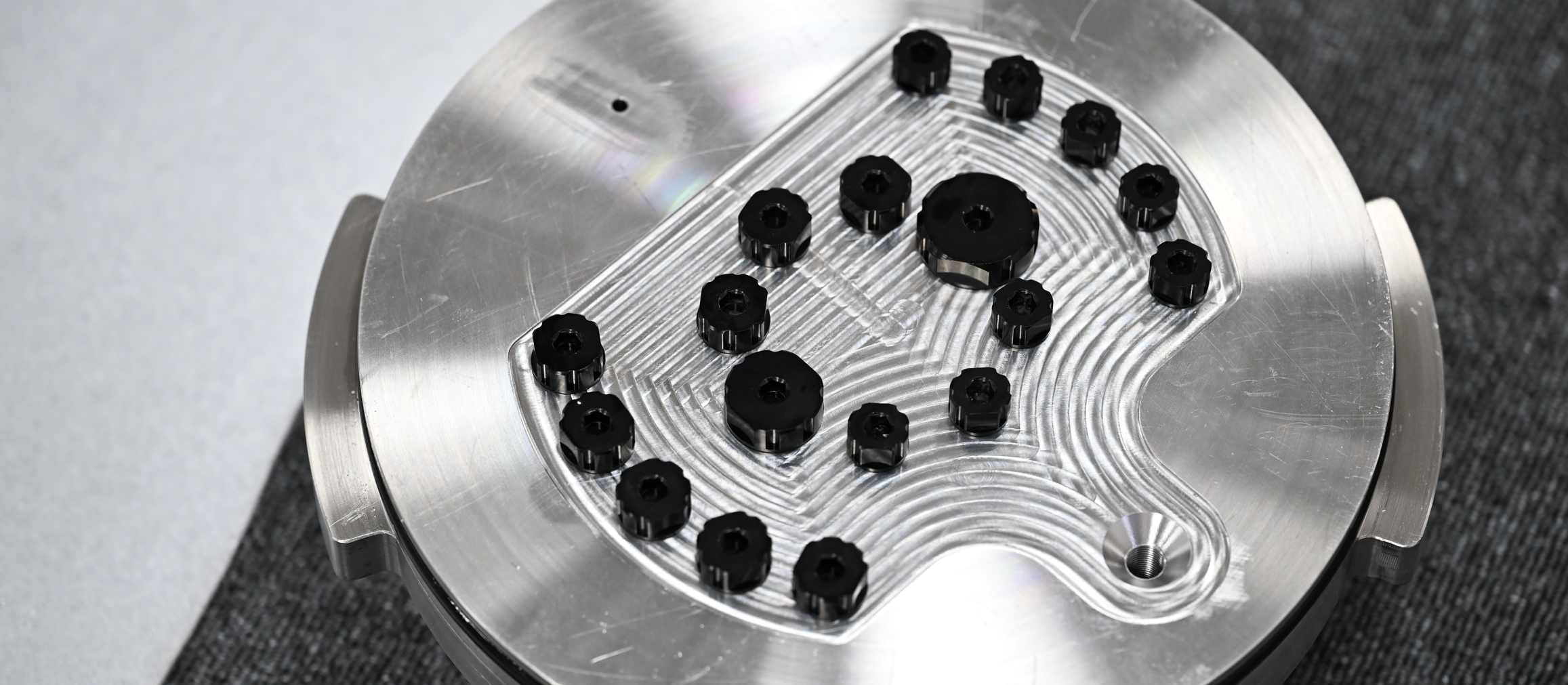
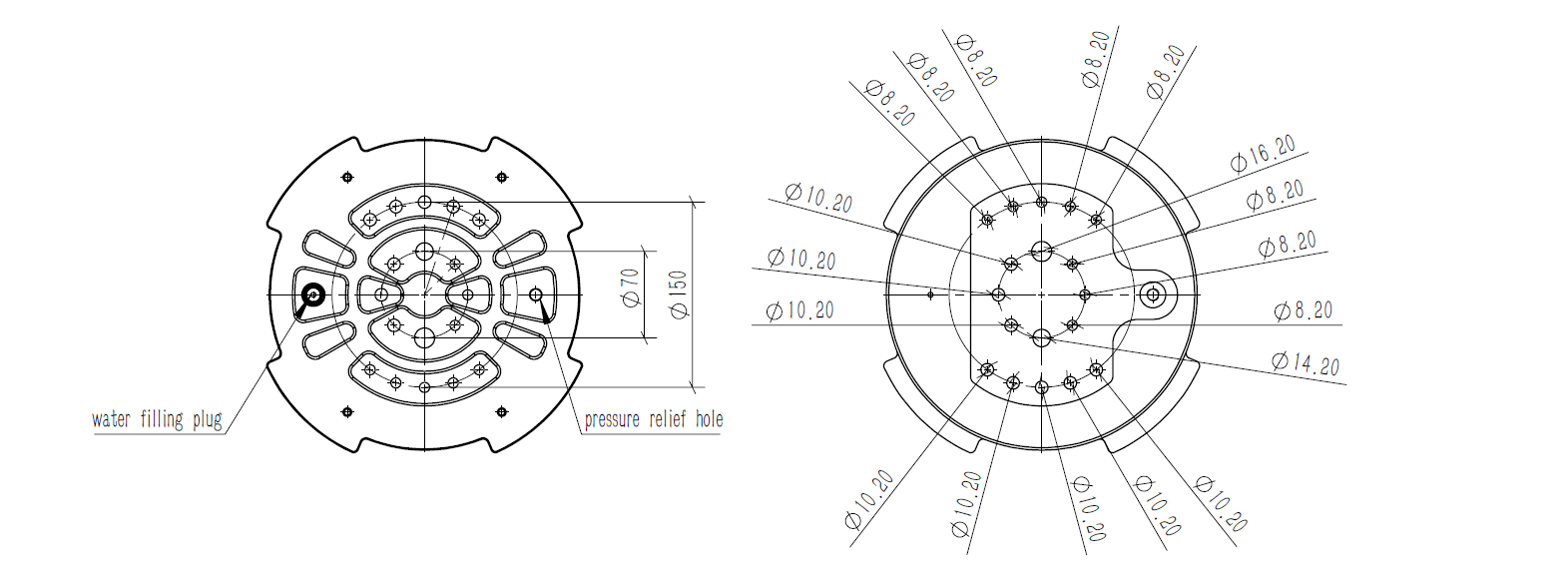
Instructions:
This pressure testing apparatus's consumables include: hatch cover sealing rings, water, lubricating grease, plugs, and other components.
There's a designated safety pressure range, and the pressure should not be sustained above 10 MPa. Any convex deformation of the hatch cover under pressure necessitates an immediate cessation of operations.
The chamber is quite heavy, so please do not attempt manual lifting. A crane should be used for lifting.
The handles are designed with high load-bearing capacity. After securing the hatch cover in place and installing safety ratchet, lifting can be initiated.
When not needed to be moved, please position the fulcrum wheels at the step load-bearing positions.
It's essential to have a basic understanding of hydraulic safety before proceeding with operations.
Disclaimer:
Operators are required to possess a fundamental understanding of hydraulic safety principles and must conduct equipment management and operations in accordance with basic hydraulic safety regulations. Any unauthorized usage or violation of these guidelines will be the sole responsibility of the operator and will not be attributed to the manufacturer.
Specific situations include but are not limited to:
1. Damage to the equipment due to inadequate knowledge of hydraulic basics, unauthorized modification, disassembly, or failure to follow instructions outlined in the manual.
2. Mishandling of the chamber's significant weight, leading to tilting, collision, or personal injury.
3. Damage caused to surfaces, such as house floors, due to insufficient load-bearing capacity.
4. Overloading or exposure to high-pressure fluids causing bodily harm.
5. Water spillage during equipment operation leading to damage of property, including houses or other valuable assets.
6. Subjecting the tested object to water pressure beyond its tolerance limit during testing, resulting in damage to the tested item.
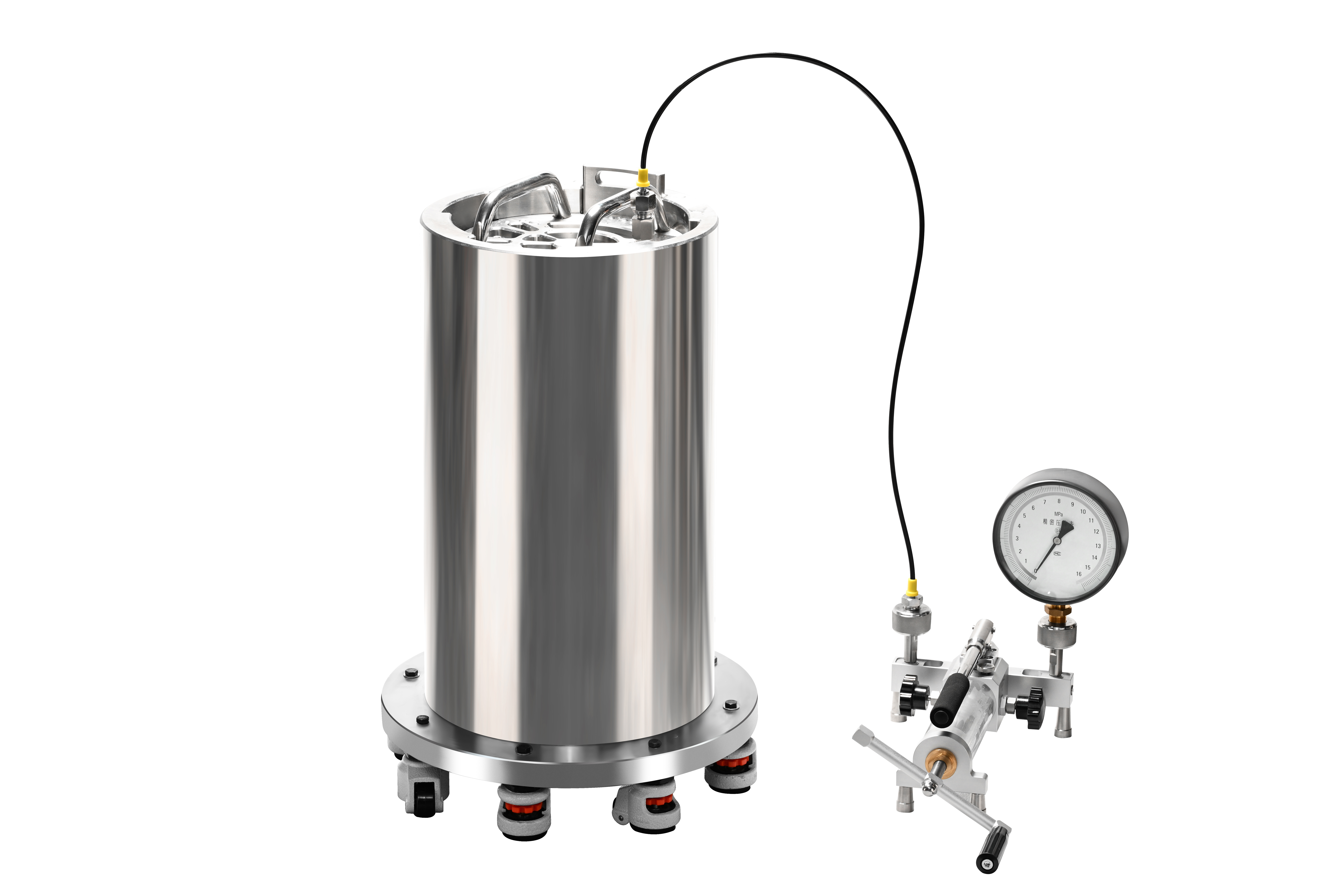
Guides
FAQ
● What tool is used to remove the pressure relief penetrator?
Use a HOP6, which is a double-ended 6mm hex wrench.
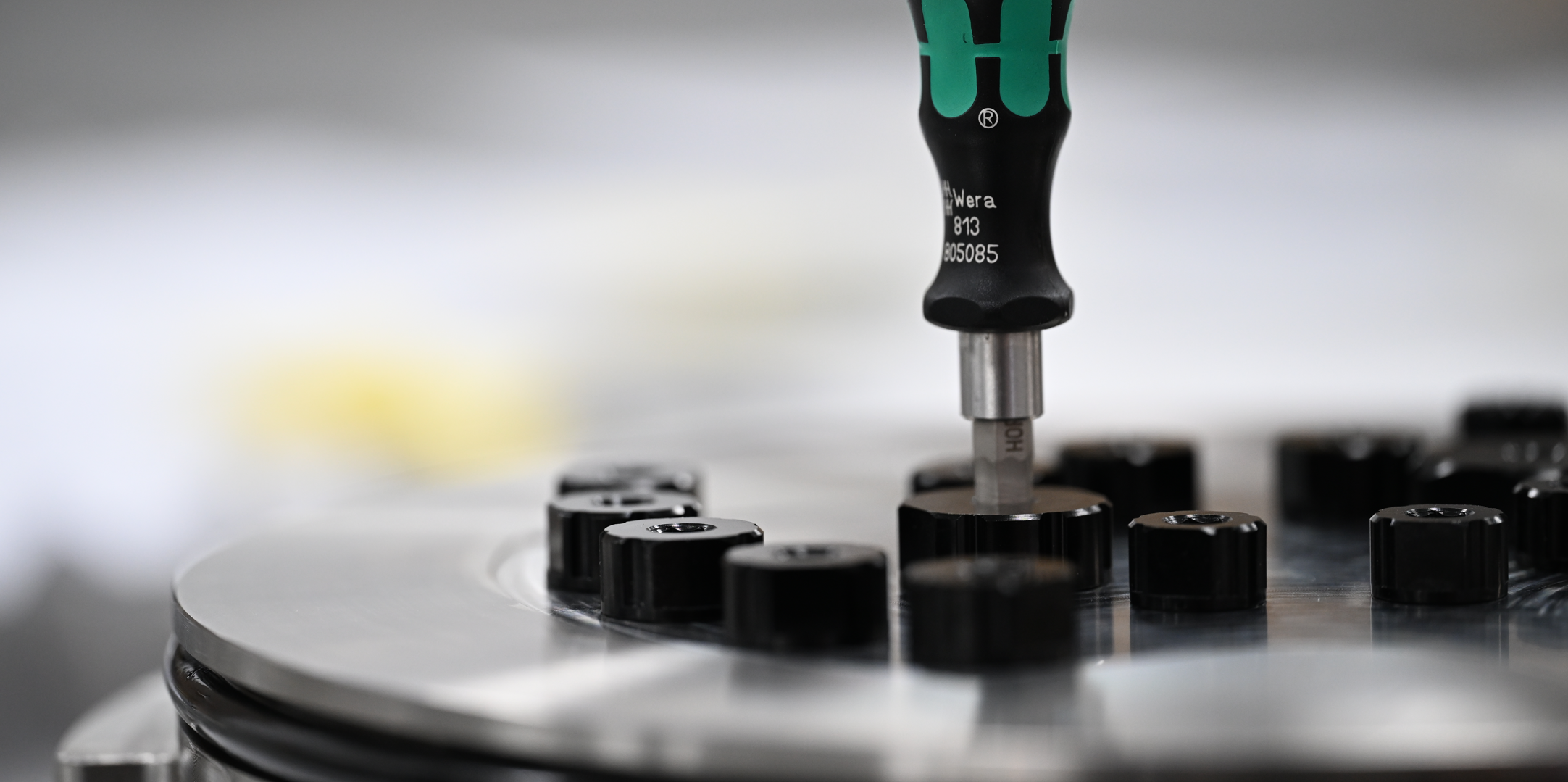
● How to move?
When moving on flat ground, adjust the fulcrum wheels and push directly. If it cannot be moved by pushing, as shown in the diagram, use a crane to lift it directly by the handles and move it.
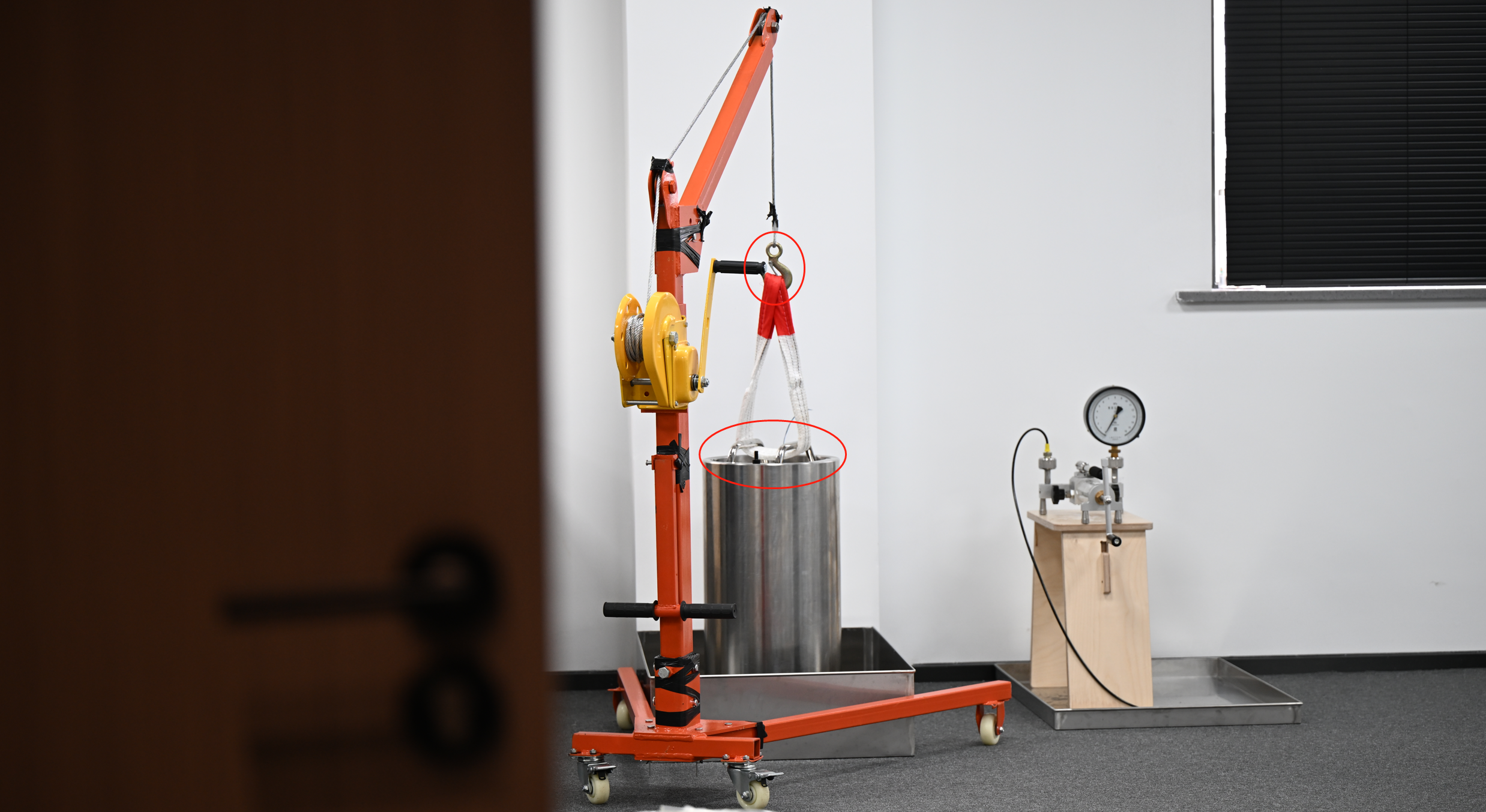
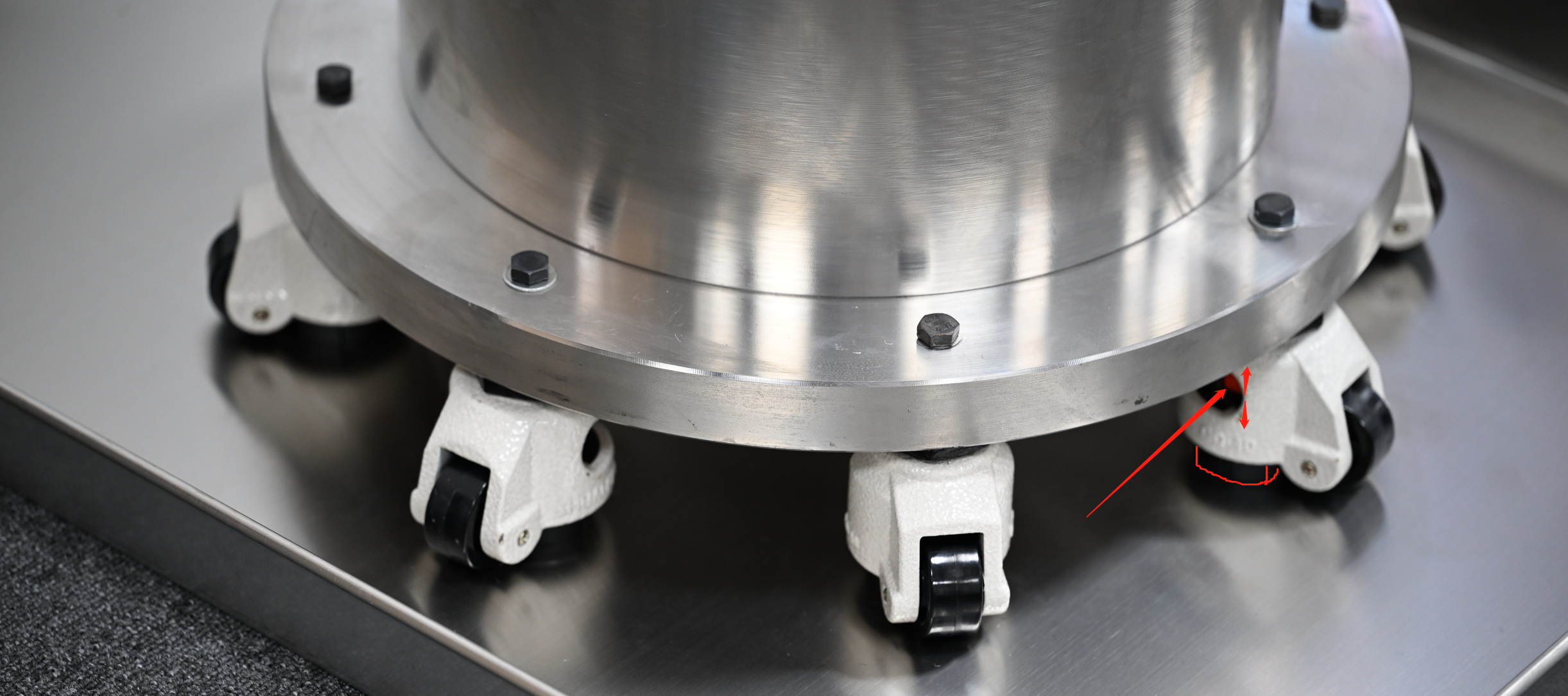
● Can the drip tray catch all the water from the chamber?
Yes, it can, but avoid submerging the chamber in external water to prevent rusting of the bottom screws.
● When the chamber is filled with water, to what level and how many liters of capacity does it reach?
Around 25 L, when the water level is about 20mm from the top edge.
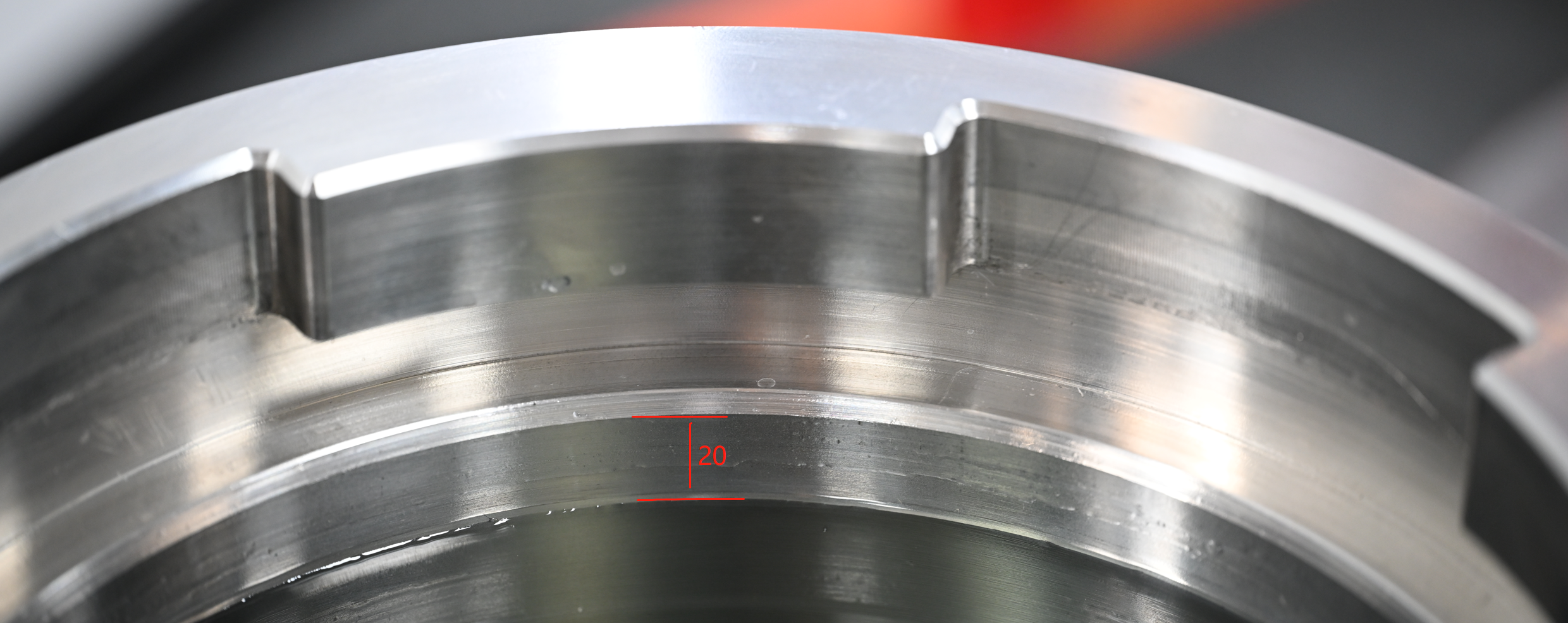
● If the pressure slightly decreases on the pressure gauge after maintaining pressure for a while, does it mean that water has entered the product?
Not necessarily. In hydraulic systems, pressure naturally tends to decrease over time during pressure holding. For extended pressure holding, the shutoff valve can be closed, and then the pressure can be read by opening the shutoff valve when the time comes. Note that before releasing pressure, make sure to open the shutoff valve before opening the pressure release valve.
● Why do the screws on the chassis rust over time?
Due to the need to withstand significant forces, high-strength carbon steel bolts (12.9 grade) are used, which may experience rusting. After coming into contact with water, make sure to promptly dry the screws.
● Is operating the manual pressure pump labor-intensive?
At low pressures, it might feel labor-intensive. Check if the shutoff valve is fully open. When reaching around 10 MPa, more effort is required.
● Why can't the manual pressure pump generate pressure?
Check whether all the hatch cover penetrators are properly installed and sealed with O-rings, whether the pressure relief penetrator is in place, and if there are any leaks in the hatch cover penetrators. Inspect whether the pressure release valve is closed and verify the fluid reservoir's liquid level.
